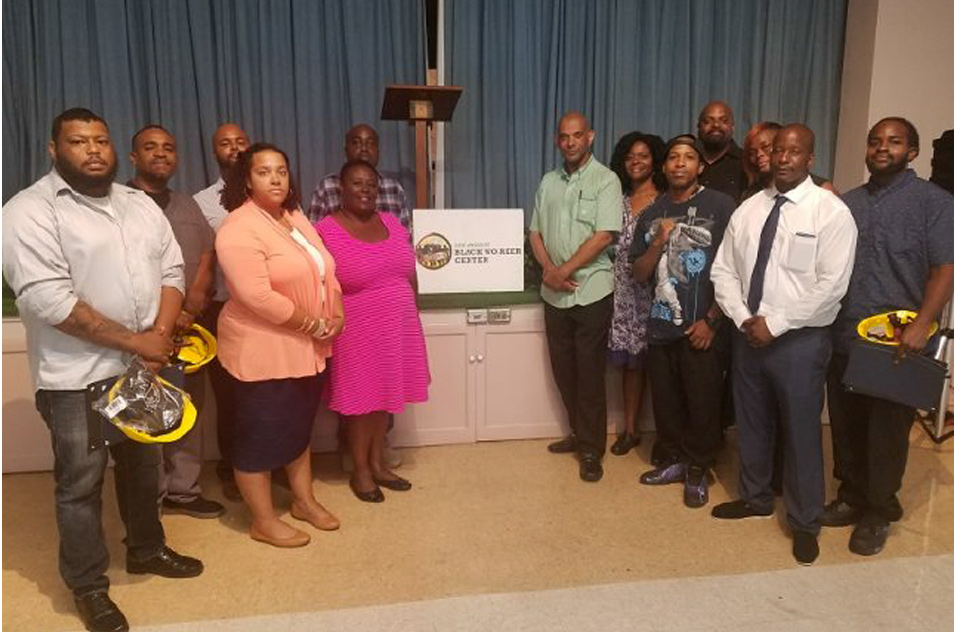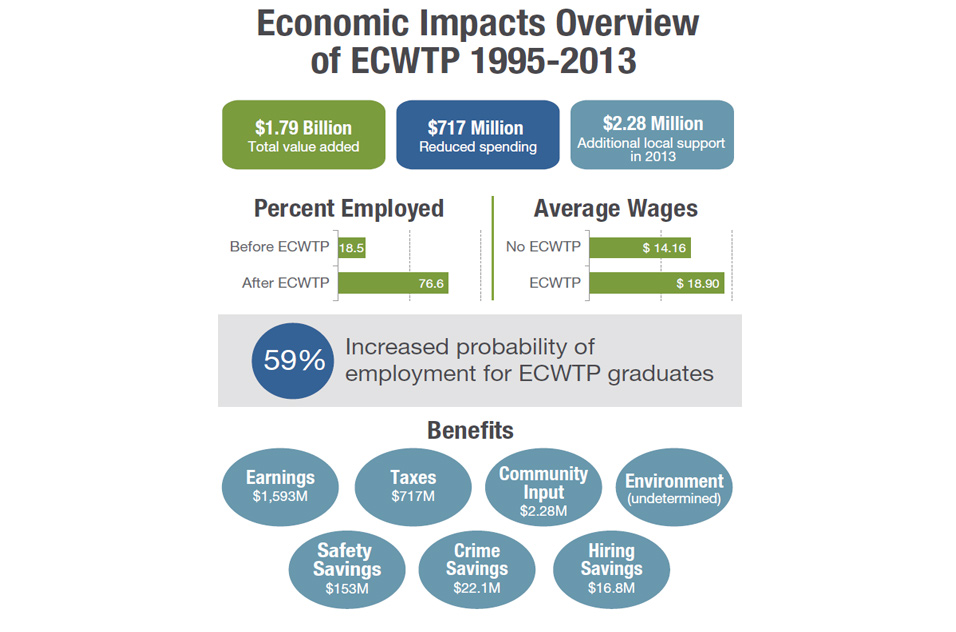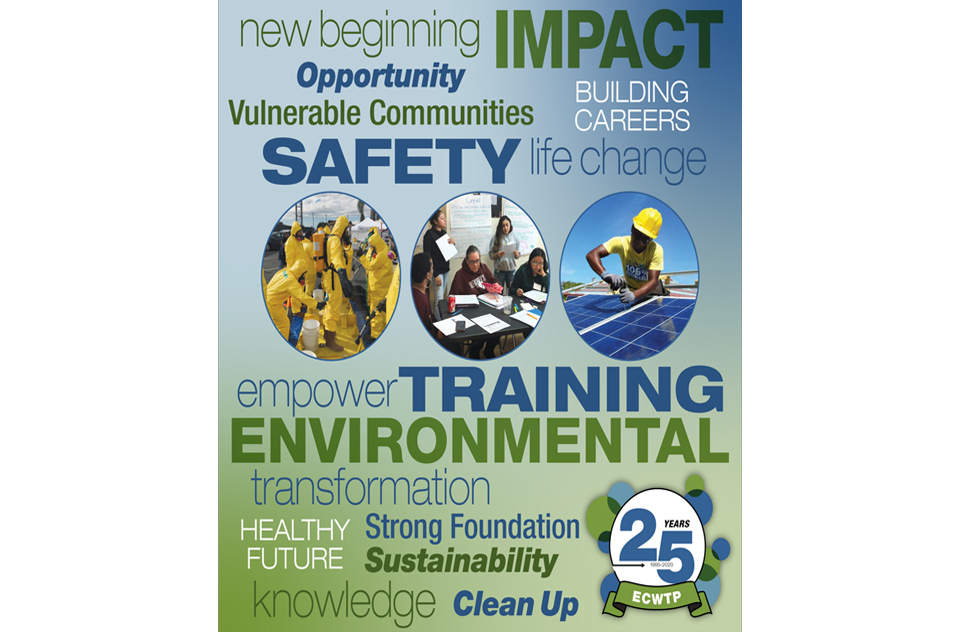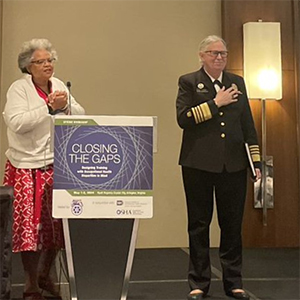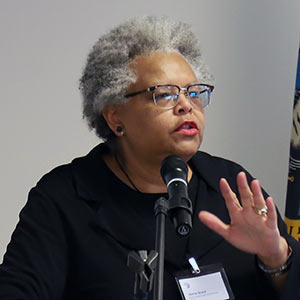This year, the NIEHS Environmental Career Worker Training Program (ECWTP) celebrates 25 years of preparing disadvantaged, underserved people for jobs involving environmental cleanup, construction, hazardous waste removal, and emergency response. ECWTP, which is part of the institute’s Worker Training Program (WTP), provides participants with pre-employment education, health and safety instruction, and life skills.
 Trainees in Chicago learned how to install solar panels. (Photo courtesy of OAI, Inc.)
Trainees in Chicago learned how to install solar panels. (Photo courtesy of OAI, Inc.)To date, 13,000 workers in more than 25 states have benefited from the program, with a historical job placement rate of 70%. According to a 2015 analysis, the economic value of ECWTP in its first 18 years was $1.79 billion — about $100 million annually. Results also showed that the program increased graduates’ probability of employment by 59%.
What ECWTP is all about
 The BuildingWorks graduate, front, shown at a job site. (Photo courtesy of Everett Kilgo)
The BuildingWorks graduate, front, shown at a job site. (Photo courtesy of Everett Kilgo)Consider the success of a person who graduated in 2018 from the BuildingWorks pre-apprenticeship program, which is led by ECWTP grantee New Jersey/New York Hazardous Materials Training Center. After release from incarceration earlier in life, he was earning only minimum wage and experiencing unstable housing.
Today, the BuildingWorks graduate earns more than $100,000 per year as a carpenter, owns a home, and has paid for his child’s education.
“This kind of story is what ECWTP is all about,” said Sharon Beard, who directs ECWTP. Beard, an industrial hygienist, has brought her expertise on worker health and safety, health disparities, and community engagement to the program since its inception.
Community collaboration
ECWTP grantees collaborate with an extensive network of nonprofits, unions, academic institutions, and employers. Those connections help form advisory boards that provide input about community needs and employment opportunities.
“The boards were established early on and have been a foundation for the growth of programs in terms of recruitment, training, and employment,” said Kizetta Vaughn, former ECWTP training coordinator for grantee CPWR – The Center for Construction Research and Training.
Solar panel installation, oil spill cleanup, and more
CPWR works with JobTrain to deliver construction training for individuals in East Palo Alto, California. This partnership led to an agreement with the San Francisco Public Utilities Commission that ensures graduates are a first source for hires by the commission.
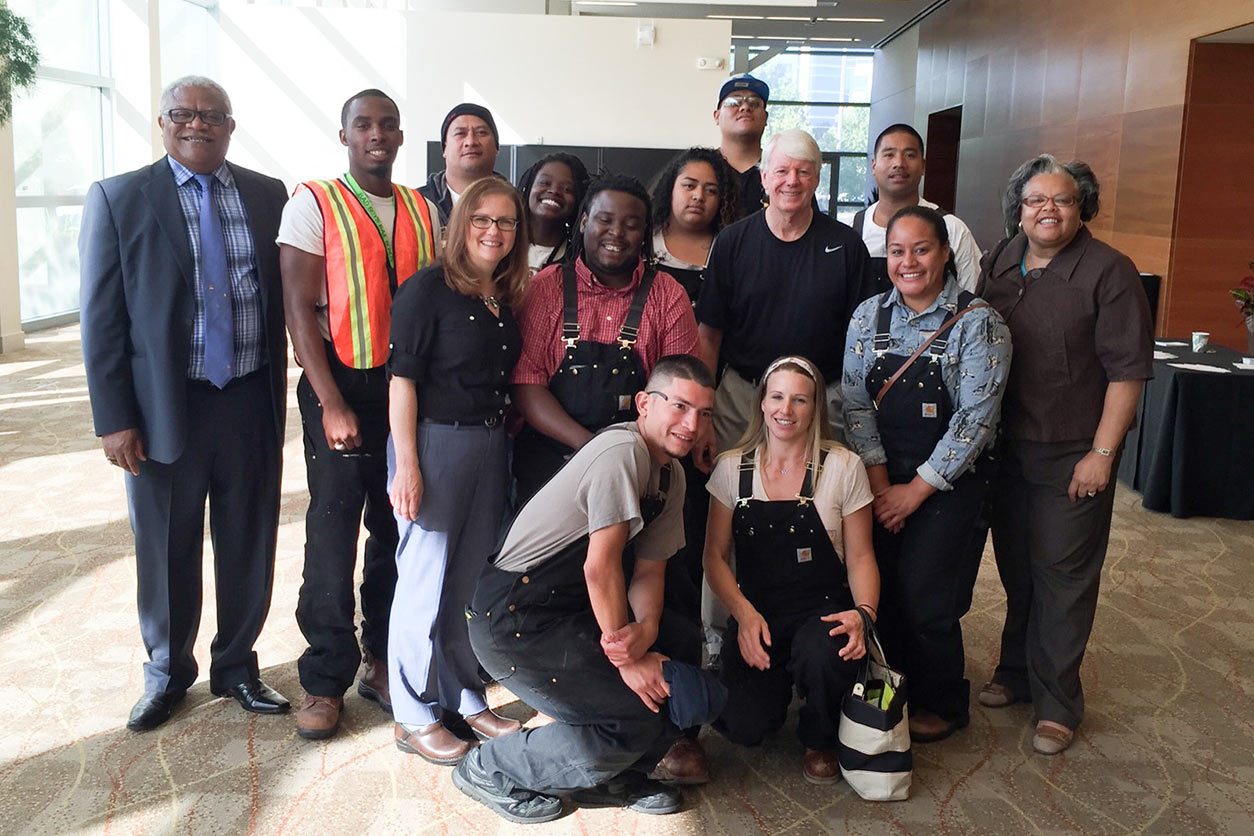 JobTrain participants in East Palo Alto posed with Beard, far right; WTP Director Joseph “Chip” Hughes, second row, middle; and WTP Public Health Educator Demia Wright, second row, far left. (Photo courtesy of Sharon Beard)
JobTrain participants in East Palo Alto posed with Beard, far right; WTP Director Joseph “Chip” Hughes, second row, middle; and WTP Public Health Educator Demia Wright, second row, far left. (Photo courtesy of Sharon Beard)Examples of other successful initiatives include the following:
- Western Region Universities Consortium partners with the Los Angeles Black Worker Center on a pre-apprenticeship readiness program that helps trainees excel in construction trades.
- OAI, Inc., in Chicago, uses funding from the Illinois Future Energy Jobs Act to teach solar panel installation.
- Individuals who received hazardous materials instruction from the Historically Black Colleges and Universities Consortium served on the front lines of the 2010 Deepwater Horizon oil spill.
- Community health workers trained by the Steelworkers Charitable and Educational Organization are helping local populations during the COVID-19 pandemic.
 ECWTP participants helped clean up the Deepwater Horizon oil spill. (Photo courtesy of Deep South Center for Environmental Justice)
ECWTP participants helped clean up the Deepwater Horizon oil spill. (Photo courtesy of Deep South Center for Environmental Justice)Second chances
Many trainees come to ECWTP with limited education and work experience, as well as other hardships. But they go on to successful careers, supporting their families and contributing to their neighborhoods, which are often near industrial sites and other environmental hazards.
“These men and women need a second chance to create a better life for themselves, their families, and their communities,” Beard explained. “ECWTP provides that opportunity.”
ECWTP, previously called the Minority Worker Training Program, began in 1995 after President Bill Clinton signed Executive Order 12898. That order required federal agencies to address environmental hazards and health effects in minority and low-income populations.
(Kenda Freeman and David Richards are research and communication specialists for MDB, Inc., a contractor for the NIEHS Division of Extramural Research and Training.)





